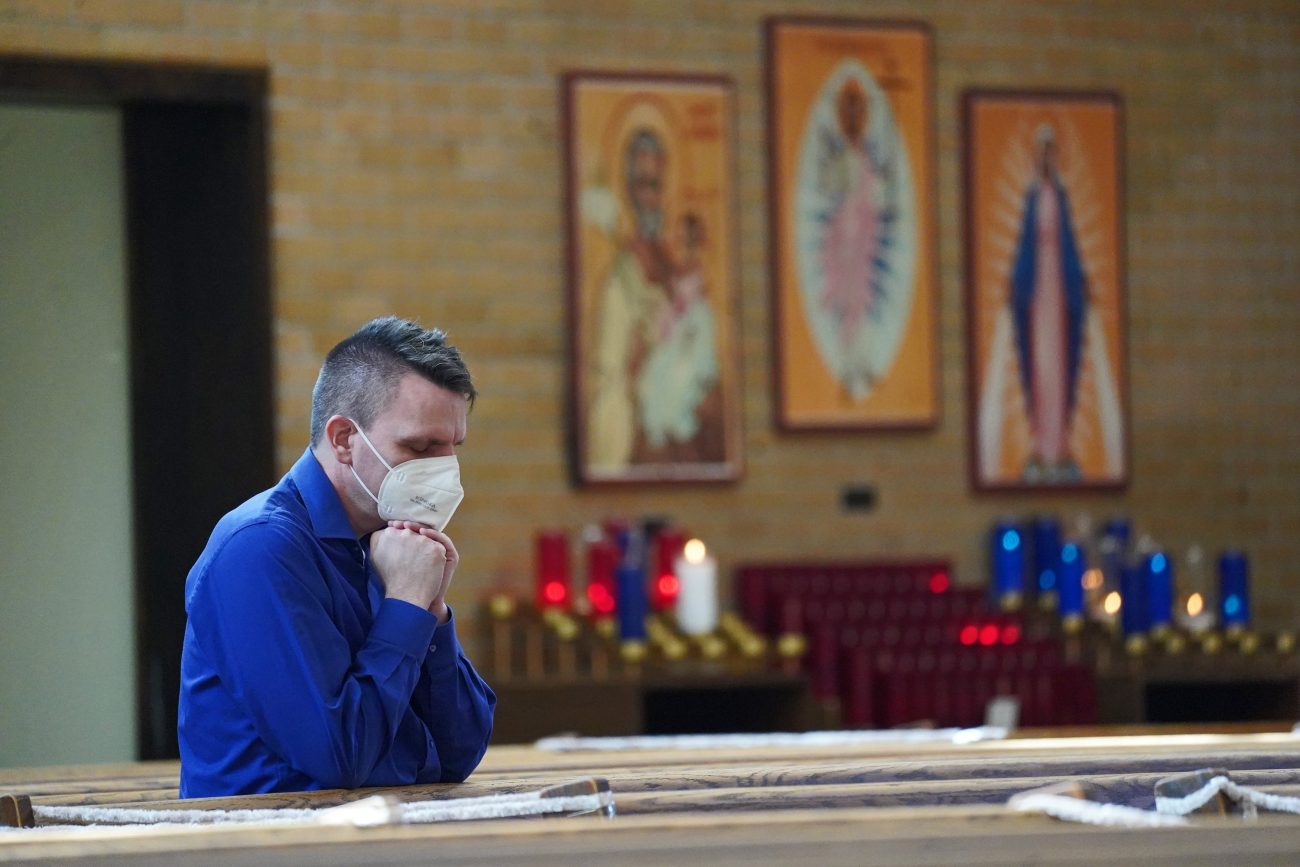If there is a universal concern among people of faith, it comes with phrases like, “I wish I could pray better” or “I don’t know how to really pray.” Across the spectrum of church membership people desire a fuller experience of prayer.
Lurking behind that desire is the discovery that people often don’t know what prayer truly is. The starting point, therefore, is to clarify what prayer is all about.
Benedictine Father Harry Hagan, a monk of St. Meinrad Archabbey, Indiana, starts his essay on prayer in the Old Testament with the profound sentence, “Prayer is the way we carry on our relationship with God” (see “The Tradition of Catholic Prayer”).
As Father Harry states so succinctly, prayer is all about a relationship with the Lord.
Striving to work on a relationship with God is an ideal goal for Lent. Just as praying well can strengthen a relationship with God, so, too, a developed relationship allows people to move beyond themselves when they enter prayer.
Like many parishes, our parish has a prayer pipeline. People can add their requests for prayer through the website, generating emails to hundreds of parishioners who have signed up to pray for people’s needs.
Bill, who reviews all prayers before they are posted, often sends questionable ones to me before publication. I’m amazed how some people think of prayer as a way of controlling God and other people.
For example, they pray that ex-boyfriends or ex-girlfriends will see the error of their decisions and come back to them. Certainly, people are hurting, but these prayer requests seem very manipulative.
Others ask for prayers that they will find the necessary money to buy what they’ve been wanting. One wonders what this kind of prayer request has to do with a God relationship. Is God merely a rich uncle?
True prayer has to focus on God and not simply on what the petitioner wants. Ultimately, every prayer has to include, at least implicitly, the phrase found in the Lord’s Prayer, “Thy will be done.”
Once again, prayer is about working on the relationship with God, which means going beyond oneself.
Many equate praying with saying prayers. There certainly is nothing wrong with knowing memorized prayers or reading prayers that various saints wrote to reflect their relationship with God.
In fact, those prayers may be of great help. In my ongoing correspondence with a prisoner whom I know, I often share the words of prayers from saints like Francis, Ignatius, Charles de Foucauld, Teresa of Ávila, Margaret Mary Alacoque or others.
These words may call someone toward a fuller experience of that powerful relationship that Jesus offers all his disciples.
Prayer, however, goes well beyond saying prayers. Like any two people who are connecting at a more personal and vulnerable level, prayer needs to come from the heart and be filled with a sharing of who a person is and what may be taking place in his or her life.
For that reason, real prayer requires time and effort. It cannot take place simply on the fly. Reciting a rosary while driving or listening to sacred music while cooking may be a good habit, but there has to be time carved out of one’s schedule just to be with the Lord.
Some years ago I discovered that having a prayer chair or a prayer corner helps tremendously. When I am sitting at that place, I can almost immediately place myself in God’s presence. Not to jeopardize the space, I try not to sit in the same chair to read the newspaper or to go online to answer emails.
Once space and time are established, then the next step for praying is to immerse oneself in the presence of God. This is the hard part, but it can be done in a number of ways.
Reading holy Scripture while employing imagery helps. It is important, of course, that the passage not simply be analyzed in terms of Scripture exegesis, but that it be allowed to speak in a personal way.
As a priest who is constantly preparing homilies, I find that Scripture-based prayer requires that I go beyond the little preaching gems I find in passages. It’s not that I ignore them, but I try not to think about how I would explain them to others. Instead, I just want to sit with the goodness of the moment.
Then comes perhaps the most peace-filled part of prayer. Knowing that one is in a holy space and with time reserved for God, what is left is for one to listen to God.
In many ways, this kind of prayer can be compared with the apostles’ experience on the mountaintop during the Transfiguration. The experience is often beyond explanation, for it is an immersion into the presence of the Divine.
In such prayer, the relationship with God is allowed to grow deeper with the realization that God is an active part of one’s life. The prayer link is established and the relationship with the Lord is strengthened.
***
Father Herb Weber is founding pastor of St. John XXIII Catholic Church in Perrysburg, Ohio. His weekly podcast can be found at 23.church.




Share this story